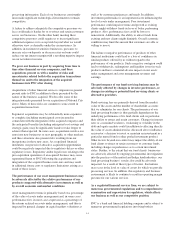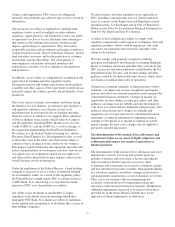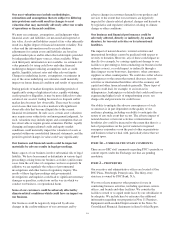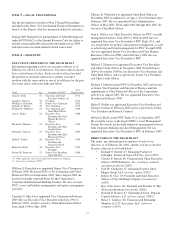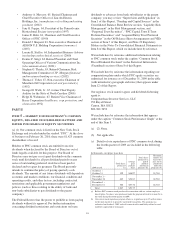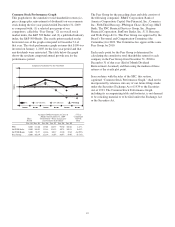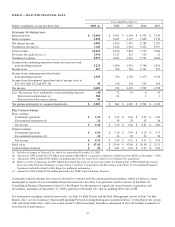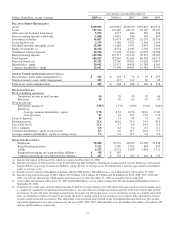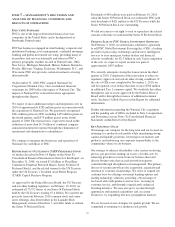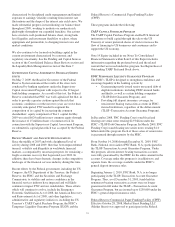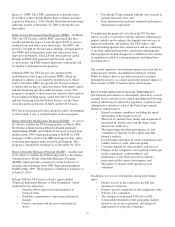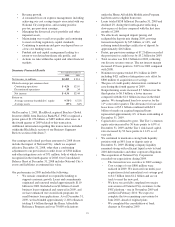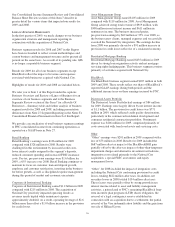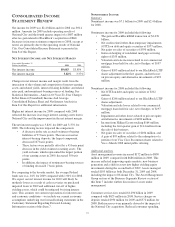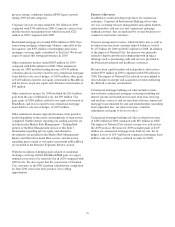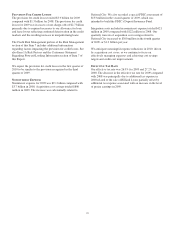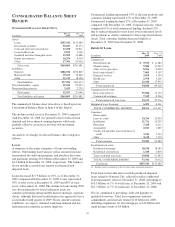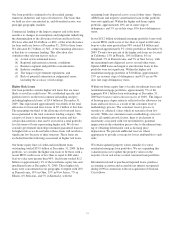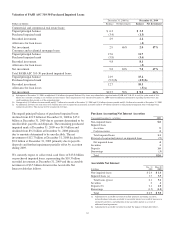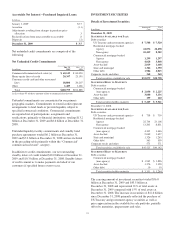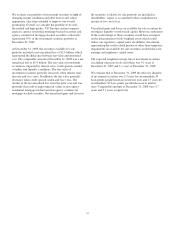PNC Bank 2009 Annual Report Download - page 28
Download and view the complete annual report
Please find page 28 of the 2009 PNC Bank annual report below. You can navigate through the pages in the report by either clicking on the pages listed below, or by using the keyword search tool below to find specific information within the annual report.
Reserve’s CPFF. The CPFF commitment to purchase up to
$5.4 billion of three-month Market Street commercial paper
expired on February 1, 2010. Market Street had no borrowings
under this facility at December 31, 2009 or during the year
then ended.
Public-Private Investment Fund Programs (PPIFs) – In March
2009, the US Treasury and the FDIC announced that they
would establish the Legacy Loans Program (LLP) to remove
troubled loans and other assets from banks. The FDIC will
provide oversight for the formation, funding, and operation of
new PPIFs that will purchase loans and other assets from
depository institutions. The LLP will attract private capital
through an FDIC debt guarantee and Treasury equity
co-investment. All FDIC-insured depository institutions will
be eligible to participate in the program.
In March 2009, the US Treasury also announced the
establishment of the Legacy Securities PPIFs, which are
designed to address issues raised by troubled assets. These
Legacy Securities PPIFs are specifically focused on legacy
securities and are part of a plan that directs both equity capital
and debt financing into the market for legacy assets. This
program is designed to draw in private capital to these markets
by providing matching equity capital from the US Treasury
and debt financing from the Federal Reserve via the Term
Asset-Backed Loan Facility (TALF) and the US Treasury.
PNC has not participated in these programs and is determining
to what extent, if any, it will participate in these programs.
Home Affordable Modification Program (HAMP) – As part of
its effort to stabilize the US housing market, in March 2009
the Obama Administration published detailed guidelines
implementing HAMP, and authorized servicers to begin loan
modifications. PNC began participating in HAMP for GSE
mortgages in May and for non-GSE mortgages in July, and is
evaluating participation in the Second Lien Program. This
program is scheduled to terminate as of December 31, 2012.
Home Affordable Refinance Program (HARP) – Another part
of its efforts to stabilize the US housing market is the Obama
Administration’s Home Affordable Refinance Program
(HARP), which provides a means for certain borrowers to
refinance their mortgage loans. PNC began participating in
HARP in May 2009. The program is scheduled to terminate as
of June 10, 2010.
In June 2009 the US Treasury issued a report entitled
“Financial Regulatory Reform: A New Foundation” which
outlined five key objectives:
• Promote robust supervision and regulation of
financial firms,
• Establish comprehensive supervision of financial
markets,
• Protect consumers and investors from financial
abuse,
• Provide the US government with the tools it needs to
manage financial crises, and
• Raise international regulatory standards and improve
international cooperation.
To implement the proposals set forth in the US Treasury
report, as well as to provide economic stimulus and financial
market stability and to enhance the liquidity and solvency of
financial institutions and markets, the US Congress and
federal banking agencies have announced, and are continuing
to develop, additional legislation, regulations and programs.
These proposals include changes in or additions to the statutes
or regulations related to existing programs, including those
described above.
The current regulatory environment remains uncertain and we
expect greater reforms and additional regulatory changes.
While we believe that we are well positioned to navigate
through this process, we cannot predict the ultimate impact of
these actions on PNC’s business plans and strategies.
K
EY
F
ACTORS
A
FFECTING
F
INANCIAL
P
ERFORMANCE
Our financial performance is substantially affected by several
external factors outside of our control including the following,
some of which may be affected by legislative, regulatory and
administrative initiatives, such as the Federal government
initiatives outlined above:
• General economic conditions, including the speed
and stamina of the fragile recovery,
• The level of, and direction, timing and magnitude of
movement in, interest rates and the shape of the
interest rate yield curve,
• The functioning and other performance of, and
availability of liquidity in, the capital and other
financial markets,
• Loan demand, utilization of credit commitments and
standby letters of credit, and asset quality,
• Customer demand for other products and services,
• Changes in the competitive and regulatory landscape
and in counterparty creditworthiness and
performance as the financial services industry
restructures in the current environment, and
• The impact of market credit spreads on asset
valuations.
In addition, our success will depend, among other things,
upon:
• Further success in the acquisition, growth and
retention of customers,
• Progress toward completion of the integration of the
National City acquisition,
• The closing of our planned 2010 sale of GIS,
• Continued development of the geographic markets
related to our recent acquisitions, including full
deployment of our product offerings,
24


